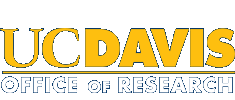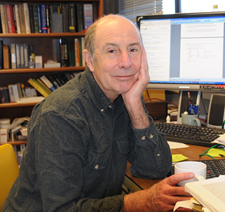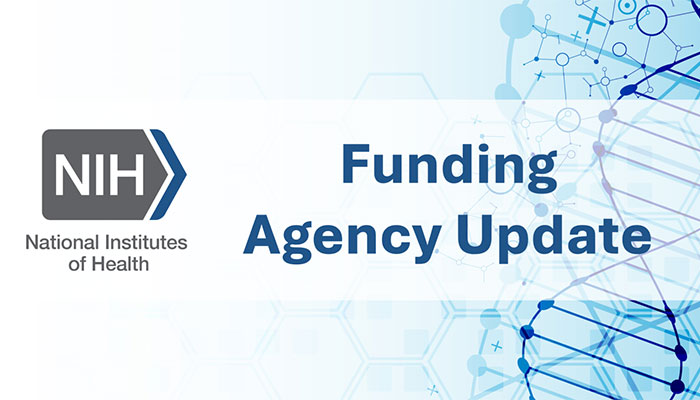New combination drug controls tumor growth and metastasis in mice
From UC Davis Comprehensive Cancer Center
Researchers at UC Davis, University of Massachusetts and Harvard Medical School have created a combination drug that controls both tumor growth and metastasis. By combining a COX-2 inhibitor, similar to Celebrex, and an epoxide hydrolase (sEH) inhibitor, the drug controls angiogenesis (blood vessel formation), limiting a tumor’s ability to grow and spread. The study appears today in the journal Proceedings of the National Academy of Sciences.
“We’ve been studying the effects of COX and sEH inhibitors, both by themselves and in combination, for several years,” said senior author and UC Davis Distinguished Professor Bruce Hammock. “We were surprised to find that the dual inhibitor was more active than higher doses of each compound, either individually or together. By combining the two molecules into one we got much greater potency against several diseases and completely unique effects in terms of blocking tumor growth and metastasis.”
Both COX and sEH enzymes control lipid signaling, which has long been associated with inflammation, cell migration, proliferation, hypertension and other processes. COX inhibitors block production of inflammatory and pain-inducing lipids, while sEH inhibitors preserve anti-hypertensive, anti-inflammatory and analgesic compounds. Separate COX and sEH inhibitors were previously found to work together in reducing inflammation and neuropathic pain.
After testing individual COX-2 and sEH inhibitors, the team synthesized the drug (PTUTB), the first combined COX-2/sEH inhibitor. They then tested the dual inhibitor against human lung and breast tumors, both in vitro and in mice. They found that PTUTB blocked angiogenesis, inhibiting the proliferation of endothelial cells, which are critical to blood vessel formation. This in turn limited tumor growth and metastasis, reducing lung and breast tumor growth by 70 to 83 percent.
In breast and lung cancers, the dual inhibitor blocked angiogenesis, which blocked the growth of solid tumors,” said Hammock. “This represents a new mechanism to control blood vessel and tumor growth.”
Robert Weiss, a co-author and professor of nephrology at UC Davis, added that the combination drug achieved the results with minimal side effects and no cardiovascular or gastrointestinal effects.
“This is particularly important when administering COX-2 inhibitors, which have well-known cardiovascular risks,” he said. “However, the added sEH inhibitor appears to block COX-2’s side effects.”
The research was initiated by first author Guodong Zhang when he was a postdoctoral fellow in the Hammock laboratory. Zhang previously demonstrated that sEH inhibitors improve the power of omega-3 fatty acid (fish oil) diets to reduce tumor growth and metastasis, and implicated epoxides of the dietary supplement DHA as the causative agent.
By advancing a new anti-angiogenic compound, the study extends the work of renowned Harvard Medical School physician and researcher Judah Folkman, who illuminated the importance of angiogenesis to tumor growth, inspiring a new class of anti-cancer drugs. Two of the study’s authors, Dipak Panigrahy and Mark Kieran, previously worked with Folkman at Harvard Medical School.
Though the research was focused exclusively on cancer, researchers said the dual compound could benefit other conditions, such as macular degeneration.
“If we move beyond cancer, this drug combination could block a number of pathologies, ranging from cardiac hypertrophy to neuropathic pain,” said Hammock. “The compound looks quite powerful for a number of conditions.”
The research teams are continuing their work on several fronts.
“One member of our research team already has made more potent inhibitors with more drug-like properties,” Hammock said. “We are looking at the molecules for a variety of indications alone and in combination, including for kidney disease, fibrotic diseases, pancreatic and colon cancer and other problems.” The molecules are patented by the University of California and are available for license and testing.
Co-author Jun-Yan Liu, who performed the analytical chemistry for the study while a postgraduate researcher at UC Davis, is now examining the efficacy of the compounds in kidney disease and gout at a laboratory in the Shanghai Tenth Peoples Hospital.
“One of the most exciting things about this project was the ability to work with experts in multiple fields to find new drug class and new mechanism that promises to actually help people with cancer,” Liu said.
Other researchers included: Sung Hee Hwang, Jun Yang, Lisa M. Mahakian, Yanru Wang, Elizabeth S. Ingham, Sarah Tam, Robert H. Weiss and Katherine W. Ferrara, all of UC Davis, and Hiromi I. Wettersten, formerly of UC Davis and now at UC San Diego.
The research was supported by NIEHS R01 ES02710, Superfund P42 ES04699, NIH/NIOSH U54 OH07550, R01 CA134659, R01 CA112356, R01 CA103828, NIH contract HHSN268201000043C, Research Investments in the Sciences and Engineering (RISE) Program of UC Davis, R01 CA148633, R01 CA135401, R01 DK082690, the Stop and Shop Pediatric Brain Tumor Fund, the C.J. Buckley Pediatric Brain Tumor Fund, the Medical Service of the US Department of Veterans Affairs and the American Asthma Society.
UC Davis Comprehensive Cancer Center UC Davis Comprehensive Cancer Center is the only National Cancer Institute-designated center serving the Central Valley and inland Northern California, a region of more than 6 million people. Its specialists provide compassionate, comprehensive care for more than 10,000 adults and children every year, and access to more than 150 clinical trials at any given time. Its innovative research program engages more than 280 scientists at UC Davis, Lawrence Livermore National Laboratory and Jackson Laboratory (JAX West), whose scientific partnerships advance discovery of new tools to diagnose and treat cancer. Through the Cancer Care Network, UC Davis collaborates with a number of hospitals and clinical centers throughout the Central Valley and Northern California regions to offer the latest cancer care. Its community-based outreach and education programs address disparities in cancer outcomes across diverse populations.
For more information about the UC Davis Comprehensive Cancer Center, visit cancer.ucdavis.edu.
For related news, click here.
Media Contact
Dorsey Griffith, Sr. Public Information Officier, (916) 734-9118, [email protected]
Latest News & Events





